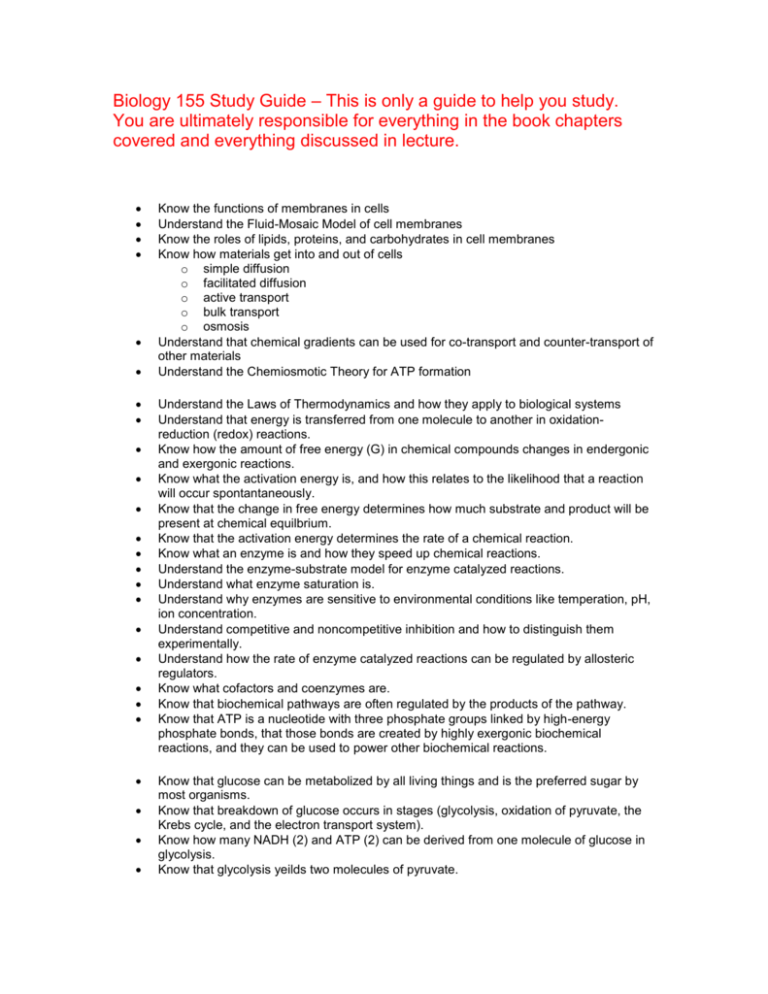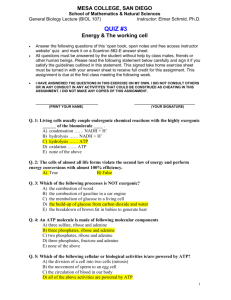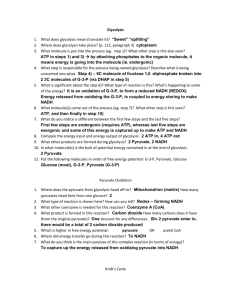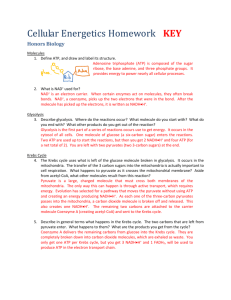studyguide2
advertisement

Biology 155 Study Guide – This is only a guide to help you study. You are ultimately responsible for everything in the book chapters covered and everything discussed in lecture. Know the functions of membranes in cells Understand the Fluid-Mosaic Model of cell membranes Know the roles of lipids, proteins, and carbohydrates in cell membranes Know how materials get into and out of cells o simple diffusion o facilitated diffusion o active transport o bulk transport o osmosis Understand that chemical gradients can be used for co-transport and counter-transport of other materials Understand the Chemiosmotic Theory for ATP formation Understand the Laws of Thermodynamics and how they apply to biological systems Understand that energy is transferred from one molecule to another in oxidationreduction (redox) reactions. Know how the amount of free energy (G) in chemical compounds changes in endergonic and exergonic reactions. Know what the activation energy is, and how this relates to the likelihood that a reaction will occur spontantaneously. Know that the change in free energy determines how much substrate and product will be present at chemical equilbrium. Know that the activation energy determines the rate of a chemical reaction. Know what an enzyme is and how they speed up chemical reactions. Understand the enzyme-substrate model for enzyme catalyzed reactions. Understand what enzyme saturation is. Understand why enzymes are sensitive to environmental conditions like temperation, pH, ion concentration. Understand competitive and noncompetitive inhibition and how to distinguish them experimentally. Understand how the rate of enzyme catalyzed reactions can be regulated by allosteric regulators. Know what cofactors and coenzymes are. Know that biochemical pathways are often regulated by the products of the pathway. Know that ATP is a nucleotide with three phosphate groups linked by high-energy phosphate bonds, that those bonds are created by highly exergonic biochemical reactions, and they can be used to power other biochemical reactions. Know that glucose can be metabolized by all living things and is the preferred sugar by most organisms. Know that breakdown of glucose occurs in stages (glycolysis, oxidation of pyruvate, the Krebs cycle, and the electron transport system). Know how many NADH (2) and ATP (2) can be derived from one molecule of glucose in glycolysis. Know that glycolysis yeilds two molecules of pyruvate. Know how many NADH (1) can be derived from one molecule of pyruvate being oxidized to produce CO2 and acetyl Co-A. Know how many NADH (3), FADH (1), and ATP (1) can be derived from one molecule of acetyl Co-A in the Krebs cycle. Know how many ATP can be produced in theory from NADH derived from glycolsys (2), NADH from processes within the mitochondrion (3), and FADH (2). Know how to account for the entire theoretical yield of ATP from one molecule of glucose (36). Know that the actual yield of ATP is about 30, and know why it is less than the theoretical yield of 36. Know how the electron transport system produces ATP (redox reactions are used to build a proton gradient, which is then used to drive ATP formation). Know the difference between substrate level phosphorylation and oxidative phosphorylation. Know that oxygen is the final electron acceptor in the electron transport system and all oxygen becomes part of a water molecule. Know that without oxygen, respiration can't occur. Know that many organisms can survive without oxygen using only glycolysis for ATP production, and that NADH is oxidized without ATP formation in a process known as fermentation. Know that fermentation can have either lactic acid or alcohol and CO2 as end products. Know that in the breakdown of fats and amino acids, carbon containing by products are ultimately fed into glycolysis or the Krebs cycle. Know that fatty acids are metabolized completely aerobically in a process called betaoxidation. Know that beta-oxidation yields about 20% more ATP for per carbon than does the complete metabolism of glucose in glycolysis and respiration. Know the complete balanced equation for photosynthesis of glucose. Understand that light is composed of photons and electrons can absorb photons of specific wavelengths and become "excited" or higher energy electrons. Know what wavelengths are absorbed by chlorophyll a and chlorophyll b. Know how light energy is used to produce ATP and NADPH. Know how protons are pumped in the thylakoid membranes of chloroplasts. Know that water is the source of electrons and protons and oxygen is a byproduct of photosynthesis. Know that the ATP and NADPH of the light reactions are necessary for the dark reactions (Calvin cycle). Know that an equivalent of 54 ATPs are required to synthesize one molecule of glucose in most plants. Know why high temperatures restrict a plant's ability to carry out photosynthesis. Understand photorespiration. Know how C4 pathways reduce the problems of high temperature during photosynthesis. Know that grasses isolate the dark reactions in bundle sheath cells, that bundle sheath cells are impermeable to oxygen, and that grasses use the Slack-Hatch pathway to fix CO2 in the mesophyll cells. Know that members of the cactus family and there relatives fix carbon at night using the CAM pathway so they can reduce water loss during the day.









